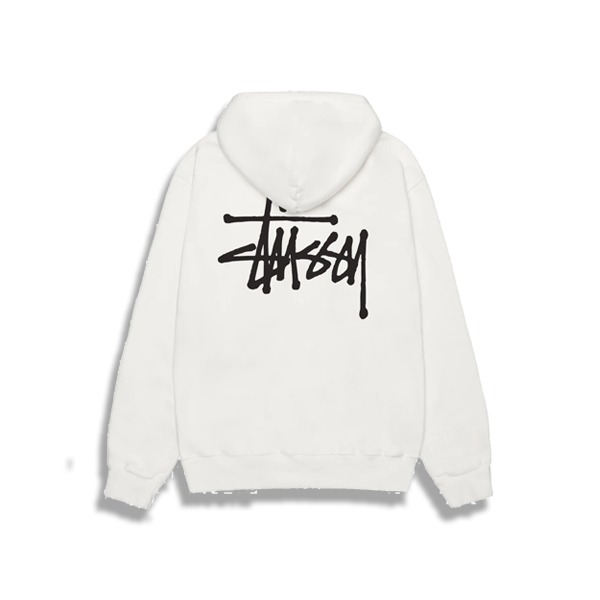
In the dynamic landscape of global streetwear, few names carry as much weight and cultural significance as Stüssy. From its humble origins as a surfboard brand in California to becoming a symbol of countercultural cool and streetwear dominance, Stüssy has consistently defined and redefined urban fashion. A crucial aspect of this continued influence is what fans and fashion observers refer to as the “Stüssy pull.” This term encapsulates the brand’s magnetic appeal, its power to attract and influence, and its unique position at the intersection of street culture, fashion, and exclusivity.
This article explores the origins and growth of Stüssy, the evolution of its aesthetic and brand philosophy, and a deep dive into the concept of “Stüssy pull”—why it matters, how it functions, and why it continues to be relevant today.
The Origins of Stüssy
Stüssy was founded in the early 1980s by Shawn Stüssy, a surfer and artist from Laguna Beach, California. Initially, Stüssy’s focus was on creating custom surfboards, which he signed with a graffiti-style signature that would later become the brand’s iconic logo. This script logo, raw and handwritten, was unlike anything in the fashion space at the time.
Realizing that the logo had a unique visual identity, Shawn began printing it on T-shirts and hats to promote his boards. However, the clothing quickly gained popularity beyond the surf community, especially among skaters, hip-hop fans, and urban youth. What began as surf gear evolved into a full-fledged streetwear label, one that laid the blueprint for the genre as we know it today.
The Rise of Streetwear and Stüssy’s Role
Streetwear as a cultural and fashion movement emerged in the 1980s and 1990s, blending influences from skateboarding, punk, hip-hop, graffiti, and sportswear. Stüssy was at the forefront of this wave, creating clothing that resonated with these subcultures while maintaining a cool, irreverent attitude.
Key to Stüssy’s rise was its International Stüssy Tribe (IST), an informal collective of tastemakers, DJs, artists, and influencers from cities like New York, London, Tokyo, and Los Angeles. These individuals not only wore Stüssy but helped shape its global identity. The IST gave Stüssy credibility and reach far beyond California, establishing it as an international brand with underground cachet.
The Aesthetic and Brand Identity
Stüssy’s aesthetic has always been about minimalism, comfort, and subcultural references. The brand mixes surf and skate influences with military surplus, sportswear, and hip-hop staples like bucket hats, oversized jackets, and baggy jeans. Over the decades, it has introduced everything from workwear-inspired pieces to psychedelic graphics, always staying a few steps ahead of the mainstream.
Yet Stüssy’s identity is not built solely on design. Much of its success comes from the brand philosophy: authenticity, rebellion, and an aversion to chasing trends. Stüssy doesn’t try to appeal to everyone—it builds a mystique by appealing to those “in the know.”
Understanding the “Stüssy Pull”
The term “Stüssy pull” refers to the unique gravitational force the brand exerts in the world of fashion and culture. It’s the allure that draws in celebrities, artists, and youth alike. But what exactly constitutes this “pull”?
-
Cultural Relevance
Stüssy remains culturally relevant through timing and tact. Whether it’s a well-timed collaboration with brands like Nike or Comme des Garçons, or limited-edition drops that sell out in minutes, the brand knows how to stay present without oversaturating. -
Scarcity and Exclusivity
A key element of the Stüssy pull is how hard it is to get certain pieces. Limited runs, regional exclusives, and collaboration drops create a sense of scarcity. This creates hype and fosters a sense of belonging among those lucky enough to cop a piece. -
Cross-Cultural Appeal
Stüssy speaks to skaters in Tokyo, fashionistas in Paris, and rappers in New York—all without losing its identity. This universal yet niche appeal makes it feel global and local at once. -
Endorsement Without Sponsorship
Unlike some brands that rely on paid endorsements, many celebrities wear Stüssy simply because they like it. From A$AP Rocky and Frank Ocean to Bella Hadid and Justin Bieber, the list of fans is long and influential. Their organic association with the brand increases its credibility. -
Brand Loyalty and Heritage
There’s a generational loyalty to Stüssy. OGs from the ’90s still wear it, and Gen Z kids are discovering it anew. This continuity fuels its pull—it’s not just a trend; it’s a tradition.
Collaborations: Fueling the Hype
Collaborations have played a huge role in amplifying the Stüssy pull. Partnering with brands that range from high fashion (Dior, CDG) to sportswear (Nike, Converse) and even niche labels (Our Legacy, BAPE), Stüssy maintains a balance between exclusivity and accessibility.
These collaborations don’t just boost sales—they extend the brand’s influence. By entering new markets or tapping into different fanbases, Stüssy keeps its name in conversations across the spectrum of fashion and culture.
The Pull in the Digital Age
With the rise of social media, hype cycles have become faster and more volatile. Yet Stüssy has adapted without compromising its DNA. It uses platforms like Instagram sparingly but effectively, promoting drops and campaigns with aesthetic restraint.
Meanwhile, resell platforms like Grailed and StockX have only intensified the Stüssy pull. A coveted jacket or shirt can fetch double or triple its retail value, creating a sense of prestige and desire.
Stüssy has also embraced pop-up culture, launching temporary stores and events around the world. These become cultural moments—fans line up for hours, creating a sense of pilgrimage. These experiences build community and deepen the emotional connection to the brand.
Criticism and Challenges
Despite its success, Stüssy is not immune to criticism. Some purists believe that the brand has strayed too far from its roots, especially with the influx of collaborations and a growing mainstream presence. Others argue that exclusivity can alienate average fans.
However, Stüssy’s continued ability to walk the line between mainstream exposure and underground credibility is a testament to its brand control and vision. It rarely overreaches, and when it does, it quickly recalibrates.
Conclusion: The Enduring Legacy of the Stüssy Pull
In an era where fashion trends come and go faster than ever, Stüssy’s longevity is remarkable. It has not only survived the test of time but has grown stronger, more relevant, and more revered with each passing decade. The Stüssy pull is not just about clothing—it’s about identity, culture, and belonging.
To wear Stüssy is to be part of a larger narrative, one that connects generations, geographies, and genres. It is fashion, yes—but also attitude, history, and community. As long as there are subcultures to inspire and youth to dress, Stüssy will remain at the heart of the streetwear conversation—and its pull will only grow stronger.





